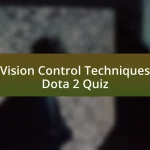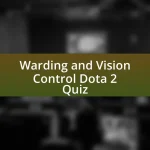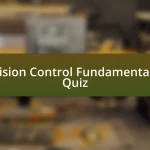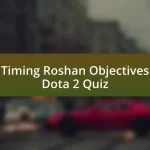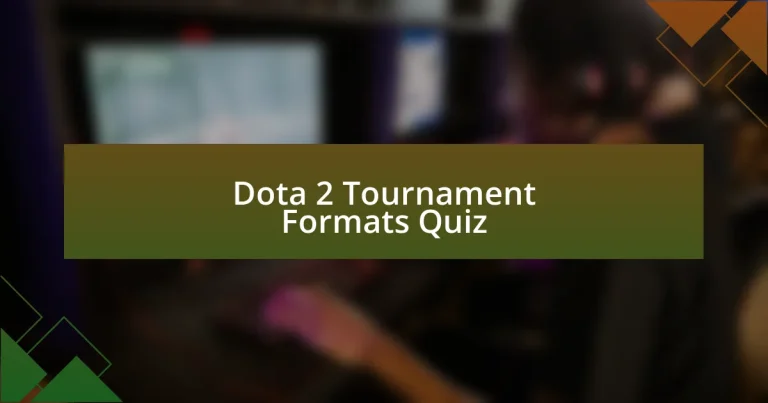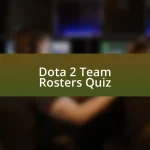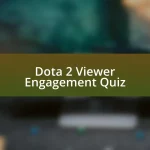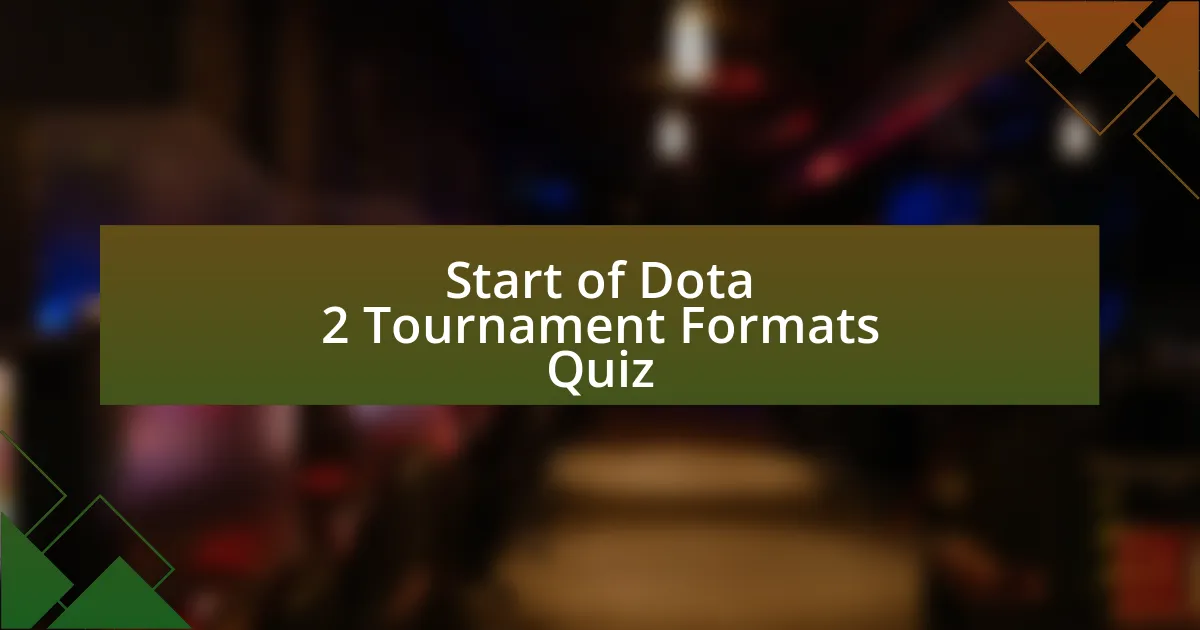
Start of Dota 2 Tournament Formats Quiz
1. What is the basic format of Dota 2 matches?
- Bo2 (A match to two victories)
- Bo4 (A match to four victories)
- Single match (A standalone match)
- Bo1 (A match to one victory)
2. In which types of matches is Bo1 commonly used?
- Exhibition matches
- Preseason matches
- Friendly matches
- Ranked matches
3. What is the main problem with Bo1 matches?
- Lack of team coordination
- Extended playtime
- The absence of balance
- Too much downtime
4. What format is used to solve the main problem of Bo1 matches?
- Bo5 (A match to three victories)
- Bo2 (A match to two victories)
- Bo3 (A match to two victories)
- Bo4 (A match to three victories)
5. What is another argument in favor of the balance of Bo3?
- The possible change of sides and the coin toss procedure
- The elimination of teams during matches
- The fixed roles for players in every match
- The use of random matchmaking for teams
6. What is the typical structure of a Major tournament in Dota 2?
- A Swiss format followed by a round-robin finale
- A group stage followed by a double-elimination bracket
- A double round-robin followed by a single-elimination bracket
- A single round-robin followed by a knockout stage
7. What are the main types of Dota 2 tournaments?
- Fun scrims, local gatherings, and friend competitions
- Casual matches, public games, and community events
- Majors, DPC events, and other various Tier 1, Tier 2, and Tier 3 tournaments
- Online duels, solo challenges, and casual events
8. What is The International (TI)?
- A casual event for Dota 2 players
- The flagship annual championship for Dota 2 with the largest prize pool and the Aegis of Champions
- A monthly league for amateur teams
- A local gaming tournament with small rewards
9. When does the group stage of TI 2023 begin?
- October 14, 2023
- November 1, 2023
- September 25, 2023
- December 5, 2023
10. When do the final three days of the playoffs of TI 2023 occur?
- October 27 to 29, 2023
- October 20 to 22, 2023
- October 24 to 26, 2023
- October 30 to November 1, 2023
11. What is the format of Elite League Season 2?
- Double Elimination and Round Robin
- Single Elimination and Group Stage
- Best of One and Best of Five
- Swiss Stage, Round-Robin Stage, and Playoffs
12. Where is the Elite League Season 2 held?
- Tokyo Dome in Japan
- Staples Center in Los Angeles
- O2 Arena in London
- ESAN Centro de Convenciones in Lima, Peru
13. What is the prize pool for Elite League Season 2?
- $500,000 with bonuses for winners
- $300,000 with a percentage for viewers
- $800,000 with an additional $200,000 distributed based on viewership
- $1,000,000 with no additional funds
14. Who will stream the Elite League Season 2 on Twitch?
- xQc
- Gorgc
- Ninja
- Tfue
15. What is the primary adjustment made to the Dota Pro Circuit rules starting from the second season (2018–2019)?
- Teams must participate in both Major and Minor events simultaneously
- The number of direct invites for The International was reduced
- Qualifying slots for regions were eliminated
- Both Major and Minor events are held in pairs with exclusively scheduled qualifiers
16. How many direct International 2019 invites were increased from the previous season?
- Ten
- Eight
- Six
- Twelve
17. How many regions were given a single qualifying slot for International 2019?
- Seven
- Five
- Eight
- Six
18. What happens to teams that fail to qualify for Major tournaments?
- They must leave the league entirely
- They are banned from participating for the rest of the season
- They are eligible to compete in Minor qualifiers
- They receive automatic invitations to other tournaments
19. What is granted to the winner of a Minor tournament?
- A cash prize of $50,000
- A trophy and medal
- A reserved slot in the associated Major
- Direct entry to The International
20. How are points earned in the Dota Pro Circuit?
- By the top six teams in Regional Leagues and the top eight teams in Major tournaments
- By winning the most games in Bo1 matches
- By participating in every tournament during the season
- By gaining the highest player KDA ratio
21. How do earlier tournaments in the season compare to events closer to The International in terms of point distribution?
- Earlier tournaments grant fewer total points, while events closer to The International weigh more heavily
- Earlier tournaments grant the same points as events closer to The International
- Events closer to The International grant fewer points than earlier tournaments
- Earlier tournaments grant more points, while events closer to The International weigh less
22. How many teams earn invites to The International based on points?
- Fourteen
- Ten
- Twelve
- Eight
23. Who manages the scheduling of Dota Pro Circuit events to avoid conflicting dates?
- Riot Games
- ESL
- Blizzard
- Valve
24. What is the typical format for hosting tournaments of all scales in Dota 2?
- Bo5 (A match to three victories)
- Bo3 (A match to two victories)
- Bo1 (A match to one victory)
- Round Robin (All teams compete against each other)
25. Why is Bo3 considered more balanced than Bo1?
- It allows a team to work on its mistakes in a blitz format and come back after losing one map.
- It gives an instant advantage to the first team to win a match.
- It requires players to use the same heroes throughout.
- It eliminates the need for strategy during matches.
26. What is the main problem with Bo5 (A match to three victories)?
- Lack of competitiveness, which favors stronger teams
- The high cost of entry, which limits participation
- Its duration, which can impact the level of performance of players
- The unpredictability of results, which complicates scheduling
27. When is Bo5 mostly played in tournaments?
- During the group stage of tournaments
- In the finals of tournaments, both big and small
- In the early rounds of tournaments
- At the start of local competitions
28. What is the purpose of playing Bo5 in the finals of tournaments?
- To limit player fatigue
- To avoid overloading viewers and players
- To shorten the match duration
- To increase the number of matches
29. What is the typical format for the grand final of a Major tournament?
- Bo1 (A match to one victory)
- Bo5 (A match to three victories)
- Swiss format (Teams are paired based on performance)
- Round Robin (All teams play each other)
30. What is the name of the championship series announced by Valve in 2015?
- The International Series
- Dota World Championships
- Valve Championship League
- Dota Major Championships (Majors)
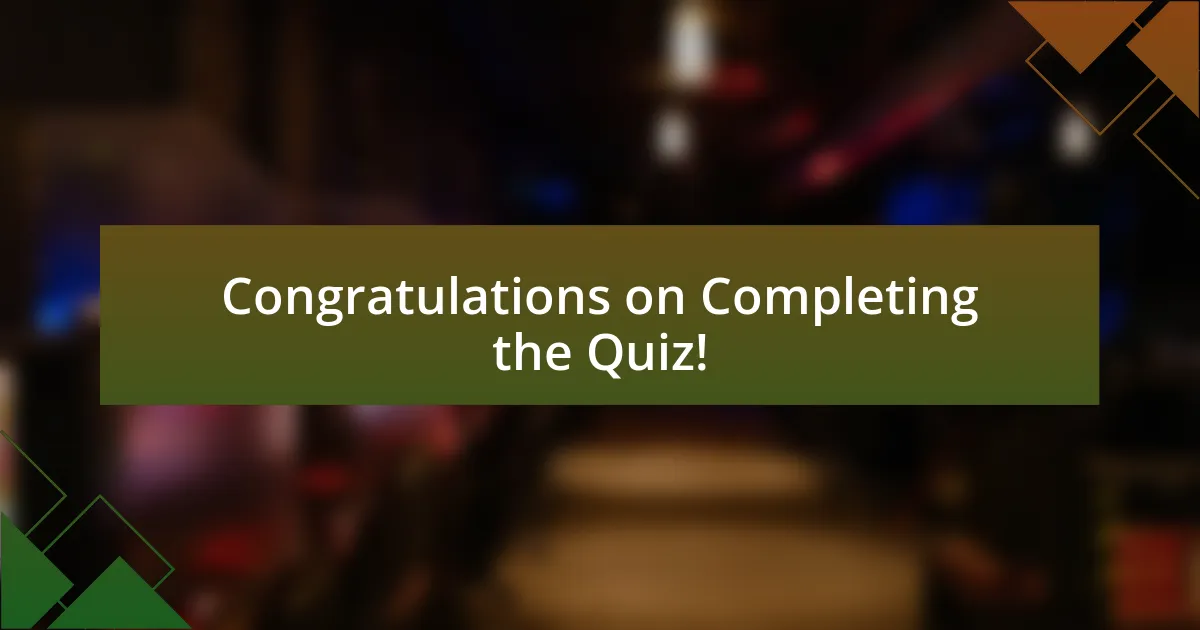
Congratulations on Completing the Quiz!
Well done on finishing the quiz about Dota 2 Tournament Formats! Your participation shows a keen interest in understanding how the competitive scene is structured. By answering the questions, you likely picked up valuable insights into various formats like single elimination, double elimination, and round-robin. Each format has its unique characteristics, influencing team strategies and outcomes in thrilling ways.
The learning process is continuous, and quizzes like this are a fun way to gauge your knowledge while discovering new information. You may have encountered terms or formats you weren’t familiar with before. This newfound understanding can enhance your experience as a fan or a player, allowing you to appreciate the intricacies of Dota 2 tournaments more deeply.
If you’re eager to expand your knowledge further, we invite you to check out the next section on this page. It contains comprehensive information about Dota 2 Tournament Formats that will provide additional context and detail. Dive in to explore this fascinating topic even more!
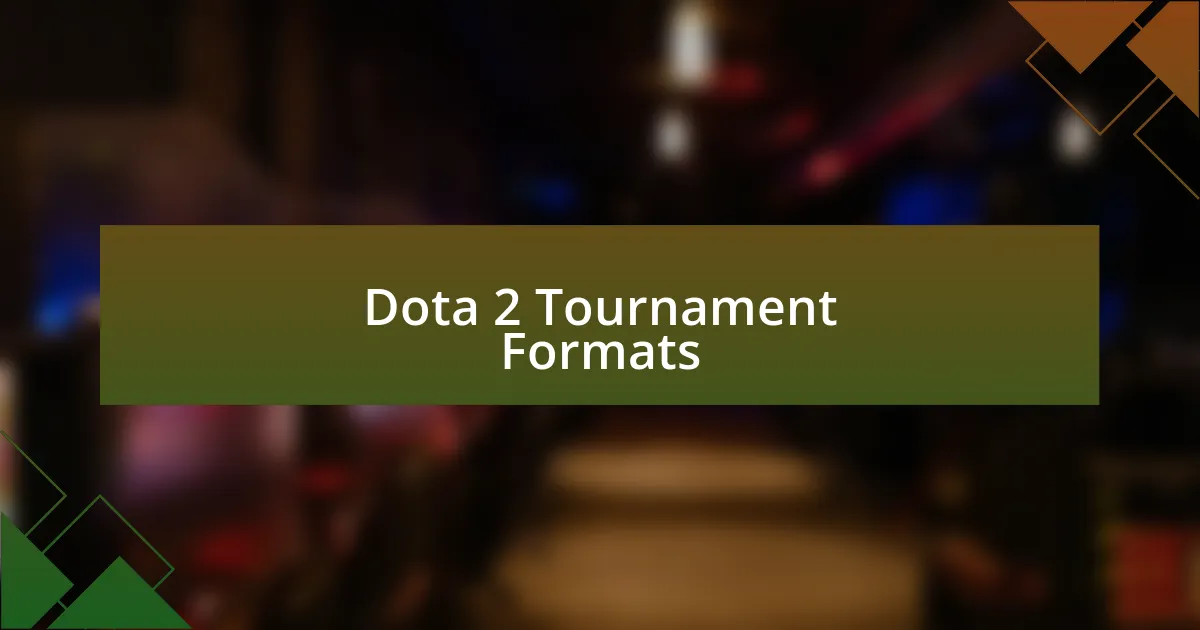
Dota 2 Tournament Formats
Overview of Dota 2 Tournament Formats
Dota 2 tournaments utilize various formats to structure competition. The most common formats are single-elimination, double-elimination, round-robin, and Swiss-system. Each format affects team progression, match scheduling, and overall tournament duration. It is essential to choose a format that aligns with the tournament’s goals and participant needs.
Single-Elimination Format
The single-elimination format allows teams to compete in a knockout system. Once a team loses a match, they are eliminated from the tournament. This format is straightforward and quick. It is often used in smaller tournaments due to its simplicity. However, it can be seen as harsh since teams have no opportunity for redemption.
Double-Elimination Format
Double-elimination provides teams with a second chance after losing. Teams are divided into two brackets: the winners and the losers. A team must lose two matches to be fully eliminated. This format ensures that a strong team has more opportunities to demonstrate their skill. It is popular in larger tournaments where top teams compete.
Round-Robin Format
In a round-robin format, each team plays against every other team. This format allows for a comprehensive evaluation of skill and performance. Points are awarded for wins, leading to rankings. Round-robin is often used in group stages. It offers a fairer assessment of team strength over a series of matches.
Swiss-System Format
The Swiss-system format matches teams with similar records as the tournament progresses. Every round, teams are paired based on their performance, ensuring competitive balance. This format can accommodate a large number of teams while minimizing the number of rounds needed. The Swiss system is suitable for tournaments with many participants, promoting more engaging matches.
What are the common formats used in Dota 2 tournaments?
Common formats in Dota 2 tournaments include single elimination, double elimination, round robin, and Swiss system. Single elimination eliminates teams after one loss, while double elimination gives teams a chance to compete in a lower bracket after a loss. In round robin, each team plays against every other team, and Swiss system pairs teams with similar records in each round. These formats ensure structured competition and maximize the chances for teams to face diverse opponents.
How do teams qualify for Dota 2 tournaments?
Teams qualify for Dota 2 tournaments through various methods, including regional qualifiers, direct invitations, and points systems. Regional qualifiers are competitions held within specific geographic regions, where top teams compete for tournament slots. Direct invitations are extended to high-ranking teams based on their performance in previous events. Points systems reward teams accumulating points through various tournaments, allowing them entry into prestigious events such as The International.
Where can Dota 2 tournaments be watched?
Dota 2 tournaments can be watched on platforms such as Twitch, YouTube, and directly through the Dota 2 client. Major tournaments often have dedicated channels where live matches are streamed. Additionally, official tournament websites provide live coverage, including match schedules and player statistics. This accessibility ensures fans can follow their favorite teams and players in real-time.
When do major Dota 2 tournaments typically occur?
Major Dota 2 tournaments typically occur throughout the year, with the most significant event, The International, usually held in the summer. Other tournaments like the Dota Pro Circuit events are spread across various seasons, often aligning with regional leagues. This timing allows teams to compete consistently and earn points leading to The International, creating a regular competitive cycle.
Who organizes Dota 2 tournaments?
Dota 2 tournaments are organized by a mix of organizations, including Valve Corporation, esports companies like ESL and DreamHack, and various community-run groups. Valve, the game’s developer, runs The International and establishes the Dota Pro Circuit. Other organizations host major events, drawing on experience and resources to create competitive and entertaining environments for players and fans alike.



